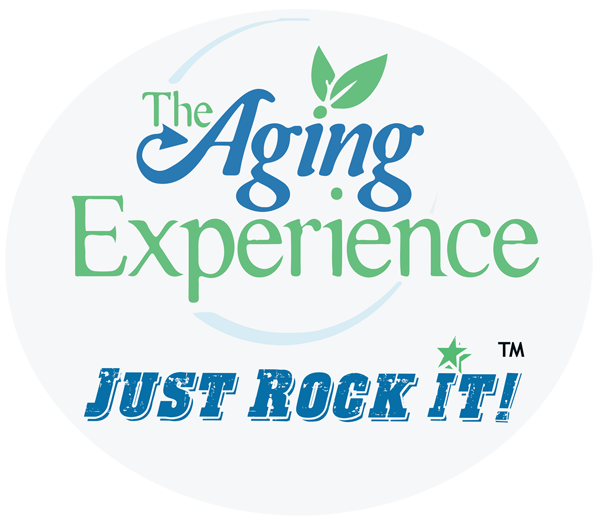Multiple Images in Post Headers
Lorem ipsum dolor sit amet, consectetur adipiscing elit. Curabitur tristique tempus sollicitudin. Praesent a nisi mi. Pellentesque ligula nulla, consectetur id volutpat sed, porta quis quam. Curabitur vel libero mi, ac rhoncus turpis. Suspendisse potenti. Pellentesque quis erat eget ante aliquet porttitor non elementum lectus. Nam dapibus elit non ligula varius pulvinar. Nullam diam eros, lobortis sed vestibulum in, interdum quis neque. Class aptent taciti sociosqu ad litora torquent per conubia nostra, per inceptos himenaeos. Donec sit amet odio purus, eu gravida tortor. Aliquam erat volutpat. Pellentesque massa augue, scelerisque eget lobortis id, commodo quis nibh. Sed suscipit sodales taciti sociosqu ad nunc at lobortis.
Lorem ipsum dolor sit amet, consectetuer adipiscing elit, sed diam nonummy nibh euismod tincidunt ut laoreet dolore magna aliquam erat volutpat. Quis aute iure reprehenderit in voluptate velit esse cillum dolore eu fugiat nulla pariatur. Stet clita kasd gubergren, no sea takimata sanctus est Lorem ipsum dolor sit amet. At vero eos et accusam et justo duo dolores et ea rebum.
At vero eos et accusam et justo duo dolores et ea rebum. Sanctus sea sed takimata ut vero voluptua. Lorem ipsum dolor sit amet, consectetur adipisici elit, sed eiusmod tempor incidunt ut labore et dolore magna aliqua. Lorem ipsum dolor sit amet, consetetur sadipscing elitr, sed diam nonumy eirmod tempor invidunt ut labore et dolore magna aliquyam erat, sed diam voluptua.
Lorem ipsum dolor sit amet, consetetur sadipscing elitr, sed diam nonumy eirmod tempor invidunt ut labore et dolore magna aliquyam erat. Lorem ipsum dolor sit amet, consetetur sadipscing elitr, At accusam aliquyam diam diam dolore dolores duo eirmod eos erat, et nonumy sed tempor et et invidunt justo labore Stet clita ea et gubergren, kasd magna no rebum. Lorem ipsum dolor sit amet. Stet clita kasd gubergren, no sea takimata sanctus est Lorem ipsum dolor sit amet.
Older Adults Experience More Vision Difficulties at Home – Make Things Brighter
 (From JAMA) Adults have better vision in clinics rather than at home, due to poor home lighting, according to a study by Anjali M. Bhorade, M.D., MSCI, of the Washington University School of Medicine, St. Louis, and colleagues. Clinicians often assume that vision measured in the clinic is equivalent to vision at home, according to the study background. However, many patients report visual difficulties greater than expected based on their vision testing in the clinic. Between 2005 and 2009, researchers studied 126 patients with and 49 without glaucoma (ages 55 to 90 years old) from the Glaucoma and Comprehensive Eye Clinics at Washington University in St. Louis. Patients underwent clinic and home visits and several aspects of their vision were measured. According to study findings, the mean scores for all vision tests were better in the clinic than at home for the participants. Glaucoma patients read two or more lines on an eye chart better in the clinic than at home and 39 percent of advanced glaucoma patients read three or more lines better in the clinic. Participants in the clinic also tested better in near visual acuity (NVA) and contrast sensitivity (CS) with glare. Lighting was the largest factor associated with difference in vision between the clinic and home; home lighting was below what was recommended for 85 percent or more of participants. So we obviously want to start lighting our house better. Seniors, 65 years and older, can sometimes require twice as much light as younger people.
(From JAMA) Adults have better vision in clinics rather than at home, due to poor home lighting, according to a study by Anjali M. Bhorade, M.D., MSCI, of the Washington University School of Medicine, St. Louis, and colleagues. Clinicians often assume that vision measured in the clinic is equivalent to vision at home, according to the study background. However, many patients report visual difficulties greater than expected based on their vision testing in the clinic. Between 2005 and 2009, researchers studied 126 patients with and 49 without glaucoma (ages 55 to 90 years old) from the Glaucoma and Comprehensive Eye Clinics at Washington University in St. Louis. Patients underwent clinic and home visits and several aspects of their vision were measured. According to study findings, the mean scores for all vision tests were better in the clinic than at home for the participants. Glaucoma patients read two or more lines on an eye chart better in the clinic than at home and 39 percent of advanced glaucoma patients read three or more lines better in the clinic. Participants in the clinic also tested better in near visual acuity (NVA) and contrast sensitivity (CS) with glare. Lighting was the largest factor associated with difference in vision between the clinic and home; home lighting was below what was recommended for 85 percent or more of participants. So we obviously want to start lighting our house better. Seniors, 65 years and older, can sometimes require twice as much light as younger people.
- Looks for ways to add plenty of natural light. More windows and skylights are better. And natural light could improve sleeping habits and decrease depression.
- Consider paints that reflect more light and replacing heavy drapery with shearer material.
- Install lights under counters. Install lights in areas where you are spending time working.
- Install rocker light switches light with a backlight or night-light in them.
- Light closets and the laundry room.
- Make sure that steps and walkways are clearly lit.
- Increase the wattage of the existing lighting.
- Put additional lights in hallways and stairways.
- Leave lights on in other rooms that may be passed through in middle of the night during trips to the bathroom.
Better lighting not only aids eyesight, it can prevent unwanted falls.
There are no traffic jams along the extra mile.
Roger StaubachLook for Long Term Care Insurance Premiums to Rise
 (From McKnight’s Long-Term Care News and Assisted Living) Leaders of Manulife Financial Corp., the parent company of John Hancock Life Insurance Co., stated they will seek to raise premiums on existing policies by an average of 25%. The announcement came during a third-quarter earnings call. Others are following suit to expect more insurance premiums to rise. Another large insurer, Genworth, also said it will pursue rate increases. These likely will be in the 6% to 13% range for in-force business purchased between 2003 and 2012, according to the company’s quarterly earnings report. Premium increases could be more significant for policies written earlier than 2002. Other insurers also recently have increased premiums substantially or exited the long-term care market altogether. The California Public Employees’ Retirement System raised monthly rates by as much as 85% for some of its long-term care insurance policies, effective in 2015. The decision has led to a lawsuit. A number of issues have necessitated the rate modifications, including miscalculations about how many people would maintain their policies and the true costs of claims, as people are receiving benefits longer than the insurers anticipated when designing these products. That last sentence is key because this has been brewing for some time now. No one anticipated how long people would need these policies and the benefits they would access. Makes it even harder as a consumer to plan though for those now saving on their health insurance consider putting those savings into long term care insurance.
(From McKnight’s Long-Term Care News and Assisted Living) Leaders of Manulife Financial Corp., the parent company of John Hancock Life Insurance Co., stated they will seek to raise premiums on existing policies by an average of 25%. The announcement came during a third-quarter earnings call. Others are following suit to expect more insurance premiums to rise. Another large insurer, Genworth, also said it will pursue rate increases. These likely will be in the 6% to 13% range for in-force business purchased between 2003 and 2012, according to the company’s quarterly earnings report. Premium increases could be more significant for policies written earlier than 2002. Other insurers also recently have increased premiums substantially or exited the long-term care market altogether. The California Public Employees’ Retirement System raised monthly rates by as much as 85% for some of its long-term care insurance policies, effective in 2015. The decision has led to a lawsuit. A number of issues have necessitated the rate modifications, including miscalculations about how many people would maintain their policies and the true costs of claims, as people are receiving benefits longer than the insurers anticipated when designing these products. That last sentence is key because this has been brewing for some time now. No one anticipated how long people would need these policies and the benefits they would access. Makes it even harder as a consumer to plan though for those now saving on their health insurance consider putting those savings into long term care insurance.
Mechanical Chest Press No Better Than Manual for CPR
 From JAMA – Chicago ÛÒ Sten Rubertsson, M.D., Ph.D., of Uppsala University, Sweden and colleagues assessed whether cardiopulmonary resuscitation (CPR) in which mechanical chest compressions are delivered with a mechanical device would result in superior 4-hour survival in patients with out-of-hospital cardiac arrest compared to CPR with manual chest compression. ÛÏMany factors affect the chances of survival after cardiac arrest, including early recognition of arrest, effective CPR and defibrillation, and postresuscitation care. One important link is the delivery of high-quality chest compressions to achieve restoration of spontaneous circulation. The effectiveness of manual chest compressions depends on the endurance and skills of rescuers, and manual compressions provide only approximately 30 percent of normal cardiac output. Manual CPR is also limited by prolonged hands-off time, and its quality is particularly poor when it is administered during patient transport. Mechanical chest compression devices have therefore been developed to improve CPR,Û according to background information in the article. ÛÏA strategy using mechanical chest compressions might improve the poor outcome in out-of-hospital cardiac arrest, but such a strategy has not been tested in large clinical trials.Û This multicenter clinical trial, which included 2,589 patients with out-of-hospital cardiac arrest, was conducted between January 2008 and February 2013. Patients were randomized to receive chest compressions from a mechanical device combined with defibrillation during the compressions (n = 1,300) or manual CPR according to guidelines (n = 1,289). The mechanical chest compressions device had an integrated suction cup designed to deliver compressions according to resuscitation guidelines. Four-hour survival was achieved in 307 patients (23.6 percent) with mechanical CPR and 305 (23.7 percent) with manual CPR. Among patients surviving at 6 months, 99 percent in the mechanical CPR group and 94 percent in the manual CPR group had good neurological outcomes. ÛÏIn patients with out-of-hospital cardiac arrest, mechanical chest compressions in combination with defibrillation during ongoing compressions provided no improved 4-hour survival vs. manual CPR according to guidelines. There was a good neurological outcome in the vast majority of survivors in both groups, and neurological outcomes improved over time,Û the authors write. So those who have been rained in manual CPR, don’t waste time trying to find mechanical solutions. The patient in front of you needs help now.
From JAMA – Chicago ÛÒ Sten Rubertsson, M.D., Ph.D., of Uppsala University, Sweden and colleagues assessed whether cardiopulmonary resuscitation (CPR) in which mechanical chest compressions are delivered with a mechanical device would result in superior 4-hour survival in patients with out-of-hospital cardiac arrest compared to CPR with manual chest compression. ÛÏMany factors affect the chances of survival after cardiac arrest, including early recognition of arrest, effective CPR and defibrillation, and postresuscitation care. One important link is the delivery of high-quality chest compressions to achieve restoration of spontaneous circulation. The effectiveness of manual chest compressions depends on the endurance and skills of rescuers, and manual compressions provide only approximately 30 percent of normal cardiac output. Manual CPR is also limited by prolonged hands-off time, and its quality is particularly poor when it is administered during patient transport. Mechanical chest compression devices have therefore been developed to improve CPR,Û according to background information in the article. ÛÏA strategy using mechanical chest compressions might improve the poor outcome in out-of-hospital cardiac arrest, but such a strategy has not been tested in large clinical trials.Û This multicenter clinical trial, which included 2,589 patients with out-of-hospital cardiac arrest, was conducted between January 2008 and February 2013. Patients were randomized to receive chest compressions from a mechanical device combined with defibrillation during the compressions (n = 1,300) or manual CPR according to guidelines (n = 1,289). The mechanical chest compressions device had an integrated suction cup designed to deliver compressions according to resuscitation guidelines. Four-hour survival was achieved in 307 patients (23.6 percent) with mechanical CPR and 305 (23.7 percent) with manual CPR. Among patients surviving at 6 months, 99 percent in the mechanical CPR group and 94 percent in the manual CPR group had good neurological outcomes. ÛÏIn patients with out-of-hospital cardiac arrest, mechanical chest compressions in combination with defibrillation during ongoing compressions provided no improved 4-hour survival vs. manual CPR according to guidelines. There was a good neurological outcome in the vast majority of survivors in both groups, and neurological outcomes improved over time,Û the authors write. So those who have been rained in manual CPR, don’t waste time trying to find mechanical solutions. The patient in front of you needs help now.










